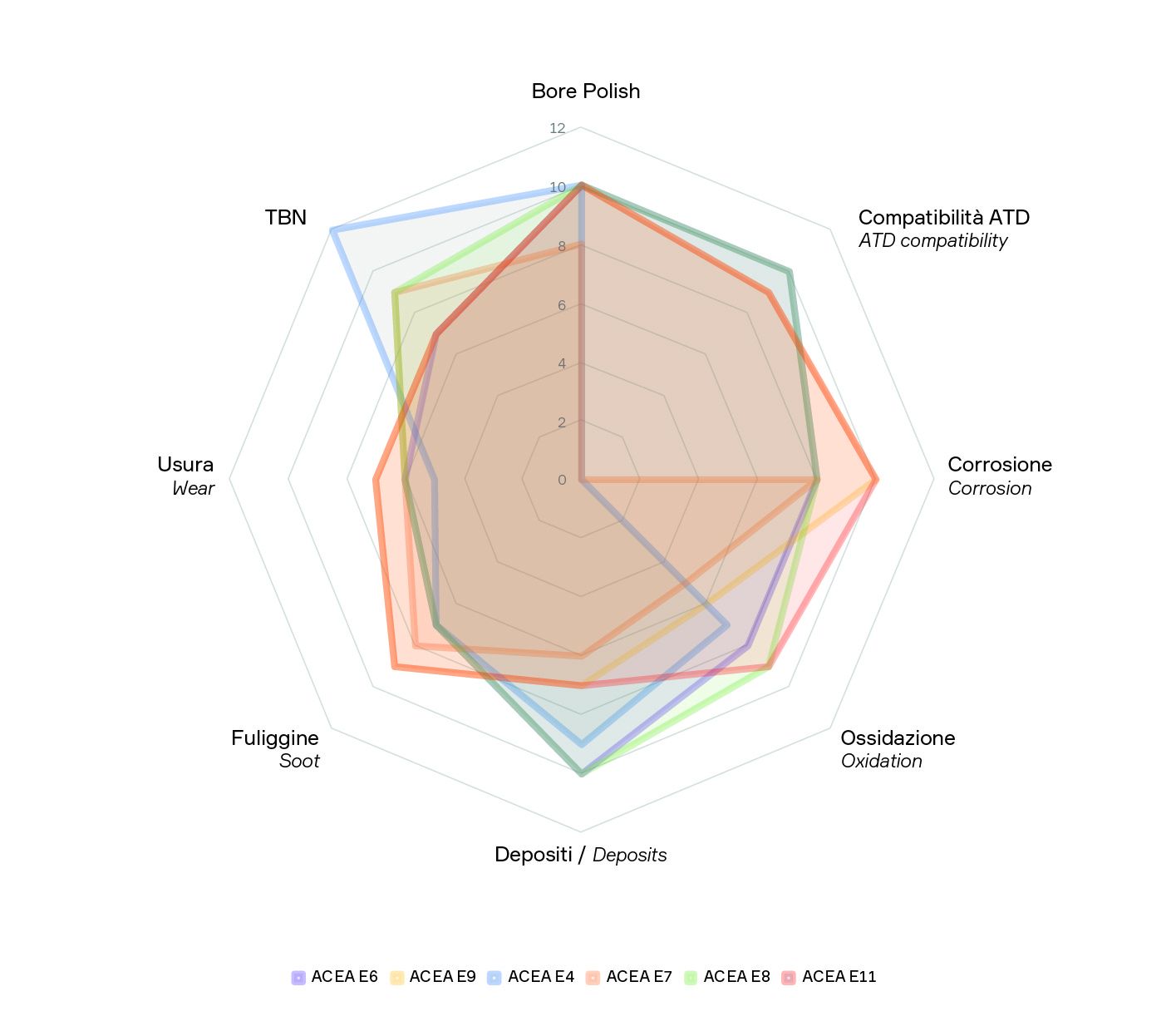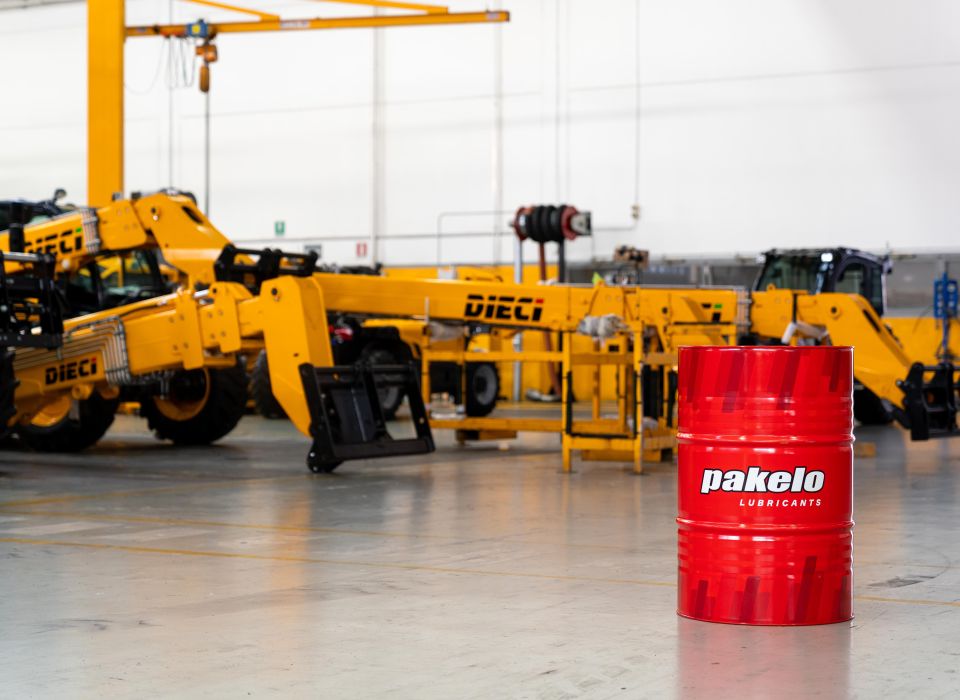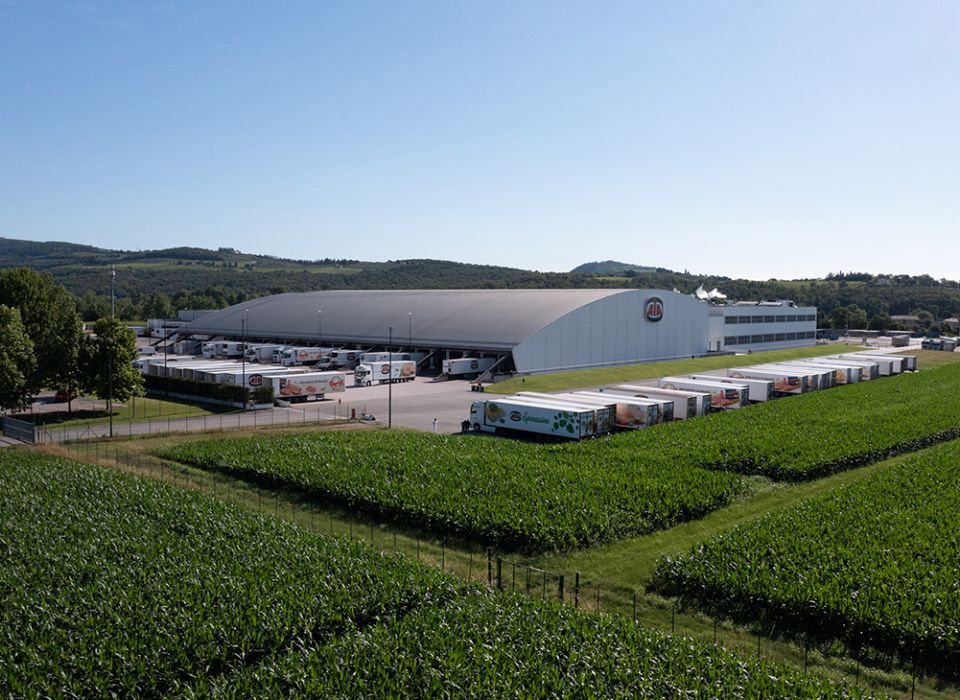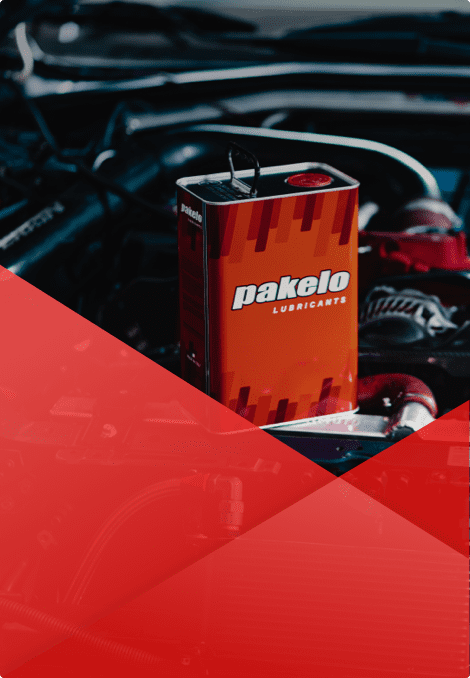Acea 2022 Oil Sequences - Heavy Duty Update Explained
Foreword
As governments continue to tighten emission limits, manufacturers are being forced to update the technical characteristics of their engines and the entire power train.
New mechanical designs thus require lubricants with increasingly stringent performance and stability requirements. It is in this context that the new ACEA “E” oil specifications for heavy-duty engines were released in May 2022 (2 years behind schedule).
The recent shift towards a certain degree of vehicle electrification is not yet technically feasible on a large scale for heavy-duty motor vehicles due to their need for power and autonomy. Therefore, rather than focus on these applications, the new specifications were more aligned with the requirements of Internal Combustion Engines (ICE).
What changes and what doesn't
The Full-SAPS (Sulphated Ash Phosphorous Sulfur), ACEA E4 and ACEA E7 specifications in fact remain the same and concern engines with limited after-treatment technology or medium-old engines.
The Mid-SAPS, ACEA E6 and ACEA E9 specifications have been updated and will be completely replaced (May 2024) by the new ACEA E8 and ACEA E11 specifications respectively.
The new specifications have more restrictive limits, but most importantly include new engine tests (Volvo T13, COAT and OM471LA FE1). The aim:
- ensure greater thermal-oxidative stability of products,
- greater resistance to aeration
- increase engine protection and durability.
These new performance levels are required in order to guarantee oils with very long replacement periods (even so much as doubled) and which are able to withstand the stresses of engines with very high specific power ratings.
A missed opportunity
The use of low HT-HS products is preliminary to the development of low-consumption engines, which, in addition to benefiting running costs, also represents another means of reducing emissions.
In the first drafts drawn up by the ATIEL (the ACEA publication body), a new category “F” had been introduced, presumably with the numbering ACEA F8 and ACEA F11. This new category was to represent the Fuel Economy version of the respective “E” categories, but characterised by a low HT-HS similar to the approach adopted for the American API FA-4 specification.
There is currently no set date for the entry into force of this type of specification, while manufacturers on the other hand are already issuing specifications with low and very low HT-HS.

| ACEA Specifications | status | Description |
|---|---|---|
ACEA E4 | current | Stable, stay-in-grade oil providing excellent control of piston cleanliness, wear, soot handling and lubricant stability. It is recommended for highly-rated diesel engines meeting Euro I, Euro II, Euro III, Euro IV and Euro V emission requirements and running under very severe conditions, eg significantly extended oil drain intervals according to the manufacturer’s recommendations. It is suitable for engines without particulate filters, for some EGR engines and some engines fitted with SCR systems. However, always check the Use and Maintenance manual. |
ACEA E6 (version 2016 - valid until May 2024) | current | Low Saps engine oil recommended for diesel engines undergoing heavy conditions and satisfying Euro I, Euro II, Euro III, Euro IV, Euro V and Euro VI emission standards. These oils are suitable for engines with EGR systems, with or without particulate filters. They are conceived to be used together with low-sulphur diesel fuel. However, always check the Use and Maintenance manual. |
ACEA E7 | Current | Stable, stay-in-grade oil providing effective control with respect to piston cleanliness and bore polishing. It further provides excellent wear control, soot handling and lubricant stability. It is recommended for highly-rated diesel engines meeting Euro I, Euro II, Euro III, Euro IV and Euro V emission requirements and running under severe conditions, eg extended oil drain intervals according to the manufacturer’s recommendations. It is suitable for engines without particulate filters, and for most EGR engines and most engines fitted with SCR system. However, always check the Use and Maintenance manual. |
ACEA E8 | Current | Stable, stay-in-grade oil providing excellent control of piston cleanliness, wear, soot handling and lubricant stability. It is recommended for highly-rated diesel engines meeting Euro I, Euro II, Euro III, Euro IV, Euro V and Euro VI emission requirements and running under very severe conditions, eg significantly extended oil drain intervals according to the manufacturer’s recommendations. It is suitable for EGR engines, with or without particulate filters, and for engines fitted with SCR NO systems. E8 quality is strongly recommended for engines fitted with particulate filters and is designed for use in combination with low-sulphur diesel fuel. However, always check the Use and Maintenance manual. |
ACEA E9 (version 2016 - valid until May 2024) | current | Mid Saps engine oil recommended for diesel engines undergoing heavy conditions and satisfying Euro I, Euro II, Euro III, Euro IV, Euro V and Euro VI emission standards. Suitable for engines with or without particulate filters and most of the engines with EGR and SCR systems. However, always check the Use and Maintenance manual. However, always check the Use and Maintenance manual. |
ACEA E11 | current | Stable, stay-in-grade oil providing effective control with respect to piston cleanliness and bore polishing. It further provides excellent wear control, soot handling and lubricant stability. It is recommended for highly rated diesel engines meeting Euro I, Euro II, Euro III, Euro IV, Euro V and Euro VI emission requirements and running under www.acea.auto 4 severe conditions, eg extended oil drain intervals according to the manufacturer’s recommendations. It is suitable for engines with or without particulate filters, and for most EGR engines and for most engines fitted with SCR systems. E11 is strongly recommended for engines fitted with particulate filters and is designed for use in combination with low-sulphur diesel fuel. However, always check the Use and Maintenance manual. |
SUGGESTED FOR YOU
-
 Academy
AcademyACEA 2022 Oil Sequences | Heavy Duty
-
 Company
CompanyPakelo’s Export Manager talks about travel, human relations and technical training on oils and lubricants
-
 Formula
FormulaFia Formula 3 Championship: the Feature race was literally dominated by Trident Motorsport
-
 Granturismo
GranturismoDaytona raceway: what happened at the Rolex 24h?
-
 Heritage
HeritageRegularity races: Does It matter more precision or speed?
-
 Rally, History
Rally, HistoryDakar Rally 1990s | A piece of Pakelo Lubricants's Story
-
 Mechanic Gods
Mechanic GodsPakelo Lubricants and Dieci Srl, a collaboration that goes on since over 10 years
-
 Oil trends
Oil trendsBiodegradable, sustainable, renewable: definitions and differences
-
 Oils & More
Oils & MoreLow HTHS oil: how does it affect fuel economy?
-
 Pakelo Heroes
Pakelo HeroesEmiliano Malagoli: Don’t call me “Hero”
-
 Oils & More, Portraits
Oils & More, PortraitsPakelo Lubricants among the food-grade lubricant suppliers for AIA
-
 Rally
RallyAfrica Eco Race 2024 Results – Jacopo Cerutti wins
-
 Travellers, Portraits
Travellers, PortraitsCroatia and Slovenia by motorbike: itinerary and preparation









